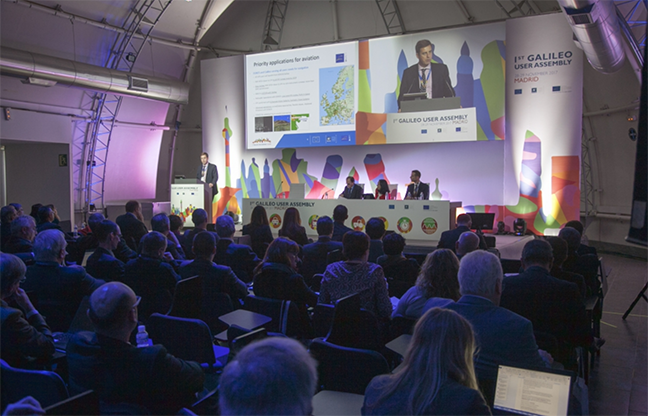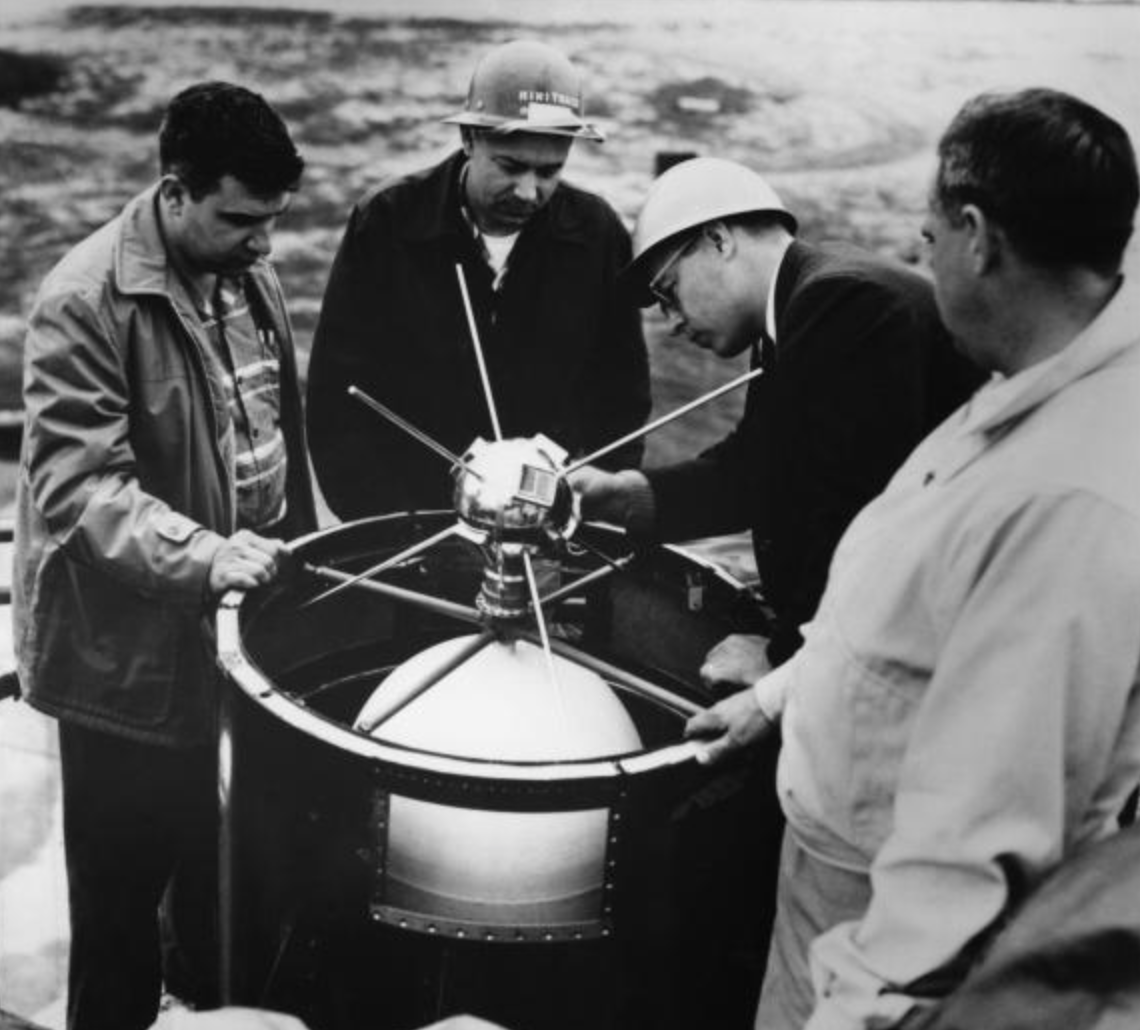Close to 300 users attended the 1st Galileo User Assembly, held in Madrid, Spain on November 28-29. The users, along with several expert presenters, came together for the first EGNSS User Consultation Platform to share their experience, discuss their needs and provide feedback on Galileo performance, one year after the launch of Galileo Initial Services.
Close to 300 users attended the 1st Galileo User Assembly, held in Madrid, Spain on November 28-29. The users, along with several expert presenters, came together for the first EGNSS User Consultation Platform to share their experience, discuss their needs and provide feedback on Galileo performance, one year after the launch of Galileo Initial Services.
On the second day the Assembly featured the first Galileo Service provision workshop as well as a plenary session during which the participants discussed their findings from thematic working groups on the previous day. Topics included precision agriculture, unmanned aerial vehicles and numerous other applications benefitting from Galileo. There was also a transport sector split into four segments: rail, road, maritime and aviation. The event was livestreamed to more than 400 viewers around the world and is available to watch below.
https://www.youtube.com/watch?v=d-AU0NPsbjE
The Galileo User Assembly, jointly organized by the European Commission (EC) and the European GNSS Agency (GSA), took place at the European GNSS Service Centre (GSC) near Madrid. During this highly successful gathering of the Galileo community, the European GNSS User Consultation Platform (UCP) was officially launched to provide an open forum for users to discuss their needs, share experiences and provide feedback on the performance of European GNSS (EGNSS).
During his opening speech Carlo des Dorides, Executive Director of the GSA, said the Assembly and the inauguration of the UCP marked a very special milestone for the Galileo program. “The User Consultation Platform demonstrates the maturity of the program,” he said, before adding “Galileo is here and performing well.”
The UCP was introduced by Gian-Gherardo Calini, Head of Market Development at the GSA. “The UCP will have very high value and importance for all users and the Galileo community as a whole – creating concrete benefits for all,” he said. “Galileo and EGNOS must work in a user driven environment and interaction with users is imperative for the success of the programs.”
The key concept of the UCP is to bring together a wide a range of users in order to ensure that the community defines the strongest possible set of Position, Navigation, and Time (PNT) user requirements in their specific market segments. The UCP also allows users to share information on needs and market trends, and builds a strong and sustainable platform to exchange user perspectives.
Linking Space to User Needs
“This will ensure that the GSA is truly fulfilling its mission to link space to user needs,” Calini said.
Fiammetta Diani of the GSA introduced the main working sessions of the UCP. She described how the Galileo User Requirements documentation is intended to serve as a reference for E-GNSS developments, emphasizing that these were “living, dynamic documents”.
The main work of the UCP took place through nine parallel workshop sessions grouping users by market segment. The transport sector was split into four segments: Rail, Road, Maritime and Aviation. Professional and high precision users were divided in three sessions: Agriculture, Surveying and Timing. In addition, one large group was convened for Mass Market and consumer applications and a specific session discussed issues around research and development.
Each session was given a set of tasks to complete and nominated a chairperson or spokesperson to report back to a final plenary session.
The topics tackled by each group included discussing and validating the user requirements for their market area or thematic topic, providing inputs to enhance EGNSS services both in general and specifically in their area, providing feedback on GSC user support, and identifying specific R&D priorities by market segment.
User Input
On the afternoon of November 29, the nominated chairs reported back on the conclusions from the nine thematic sessions providing a substantial amount of ideas and input for the GSA team to work with.
Three panelists – Gian Gherardo Calini and Aitor Alvarez Rodriguez, GSC Coordinator, for GSA, and María de las Flores Diaz Pulido for the EC commented on the presentations.
All feedback will be considered and was recorded in comprehensive minutes of the meeting for all nine thematic sessions. The minutes will be distributed to the participants at the UCP along with the full set of presentations delivered at the event.
This information will feed a review of the EGNSS User Requirements Documents that will be shared widely during Q1 of 2018. At the 2018 UCP the GSA will report back on the implementation status of all the agreed actions.
Concluding the final session Justyna Redelkiewicz Musial from the GSA accurately commented that the atmosphere of the first UCP was that of a true family gathering. “This is just the start of the dialogue,” she said. “We can improve, and we look forward to the second UCP in 2018 with even more users and the wider community.”
At a reception on the evening of the November 28, Matthias Petschke, Director of EU Satellite Navigation Programs, European Commission said: “Today Galileo is coming home.”
The full name of the GSC building is the Loyola de Palacio Global Navigation Satellite System (GNSS) Service Centre and is named in memory of the Spanish Commissioner and Vice President of the EC who was a strong supporter of Galileo in its early years.
“Her vision of Galileo has now become a reality,” he continued. “GSC is a great place to work and a great place for Galileo’s first user platform less than one year after the declaration of Initial Services.”
des Dorides, agreed, adding, “It is not by chance that we are holding the first user forum here. The GSC is core to future client service. The GSC is the entry door to the system for Galileo users with the number of registered users substantially increasing every year.”
GSC is working to implement the next version of the real-time system interface, which will be the first step towards the provision of the Galileo Commercial Service and the Open Service signal authentication, he continued.
Carmen Librero Pintado, Spanish Secretary of State for Transport said that “Spain has always supported the EGNOS and Galileo programs” and looked forward to continuing cooperation as the implementation and exploitation of the system grows.
Jean-Yves Le Gall, Chairman of the GSA Administrative Board and President of the French Space Agency (CNES), concluded the speeches by saying the performance of Galileo since the launch of Initial Services had proved that it had been the right decision. “We are entering a new era for Galileo – the exploitation phase,” he said praising the advances made over the past year.






